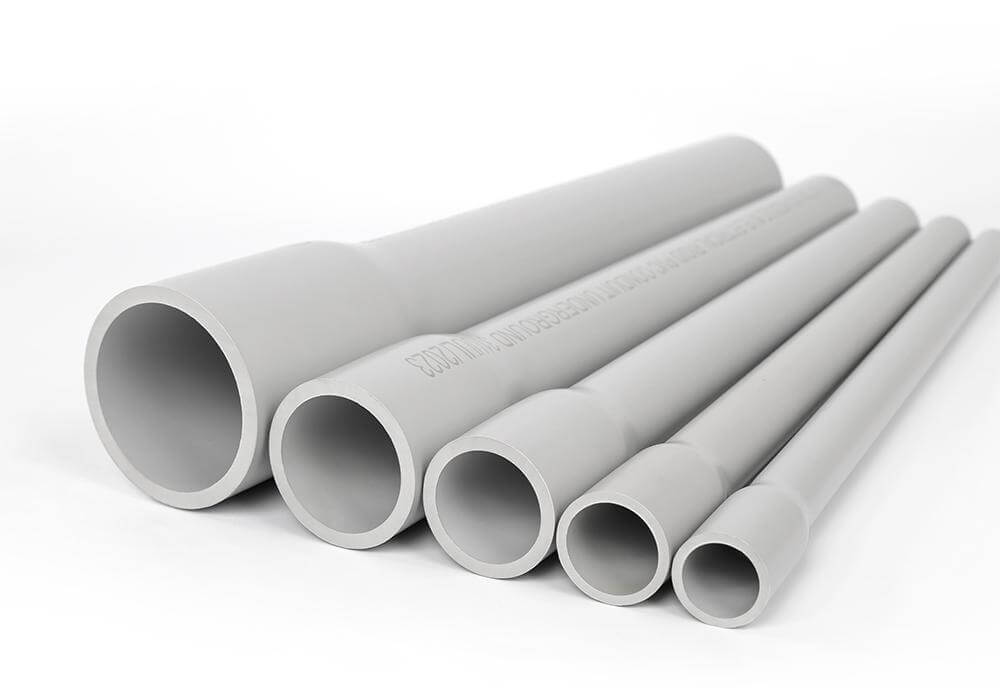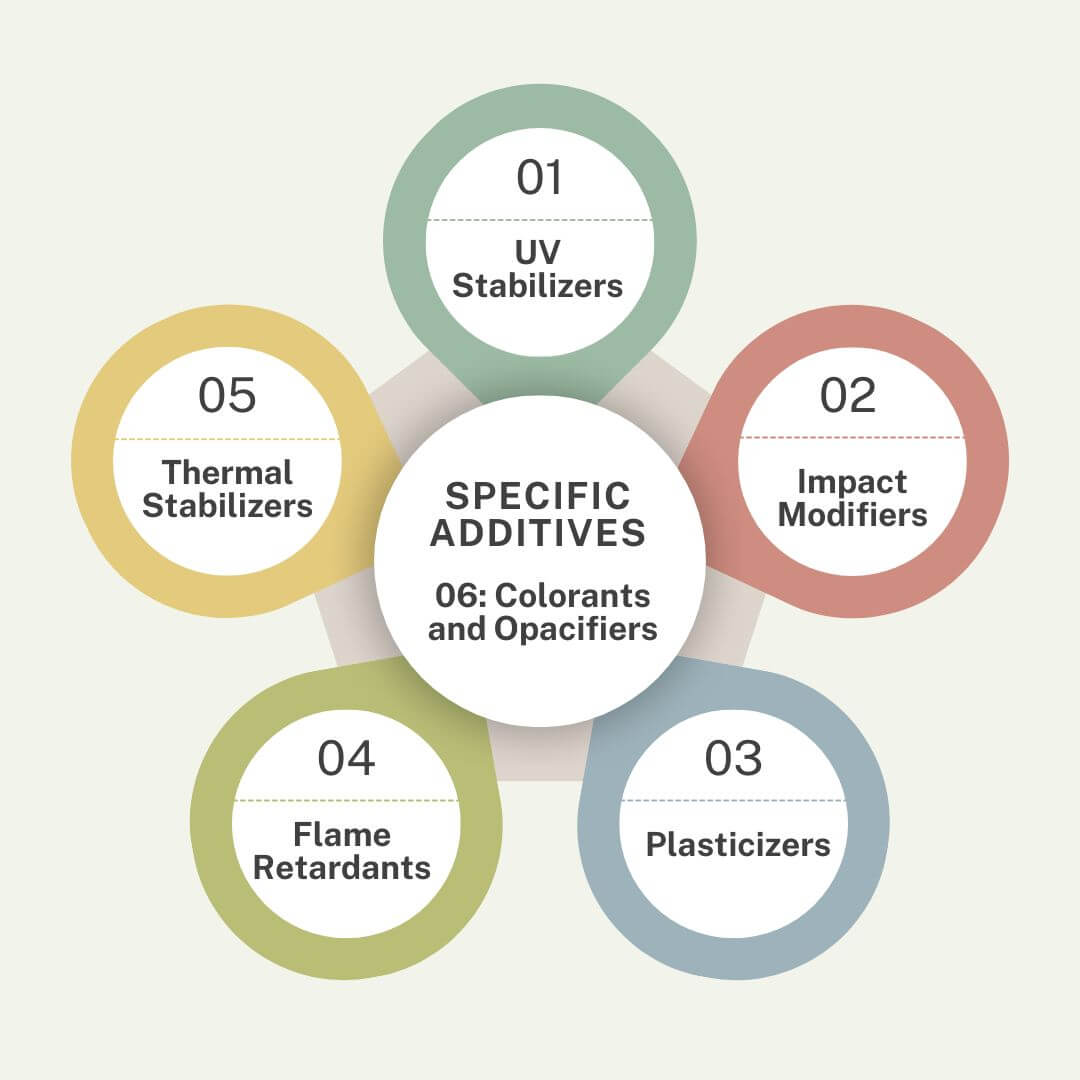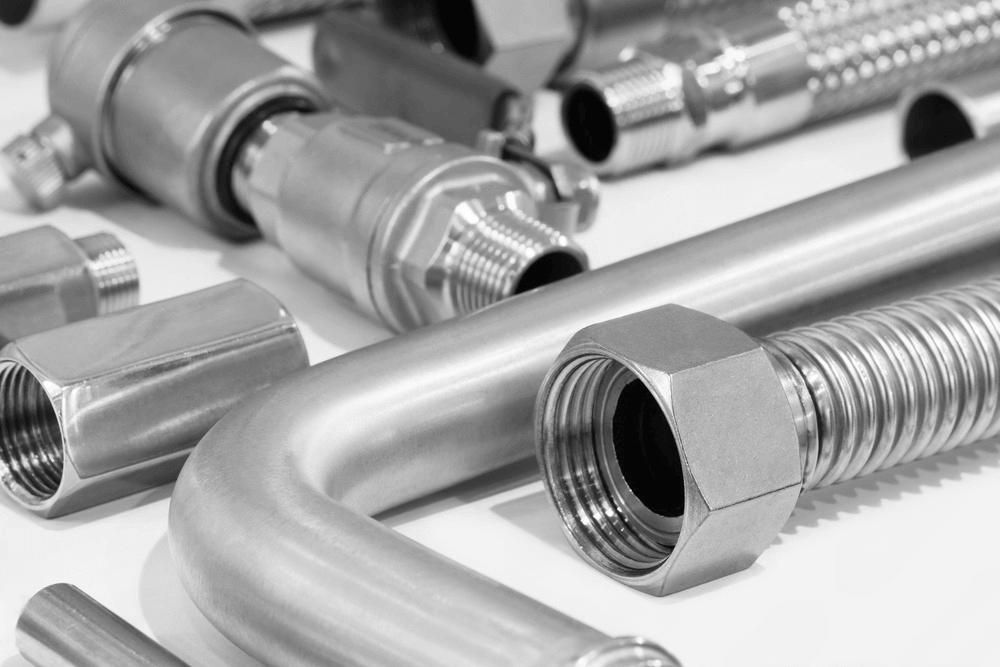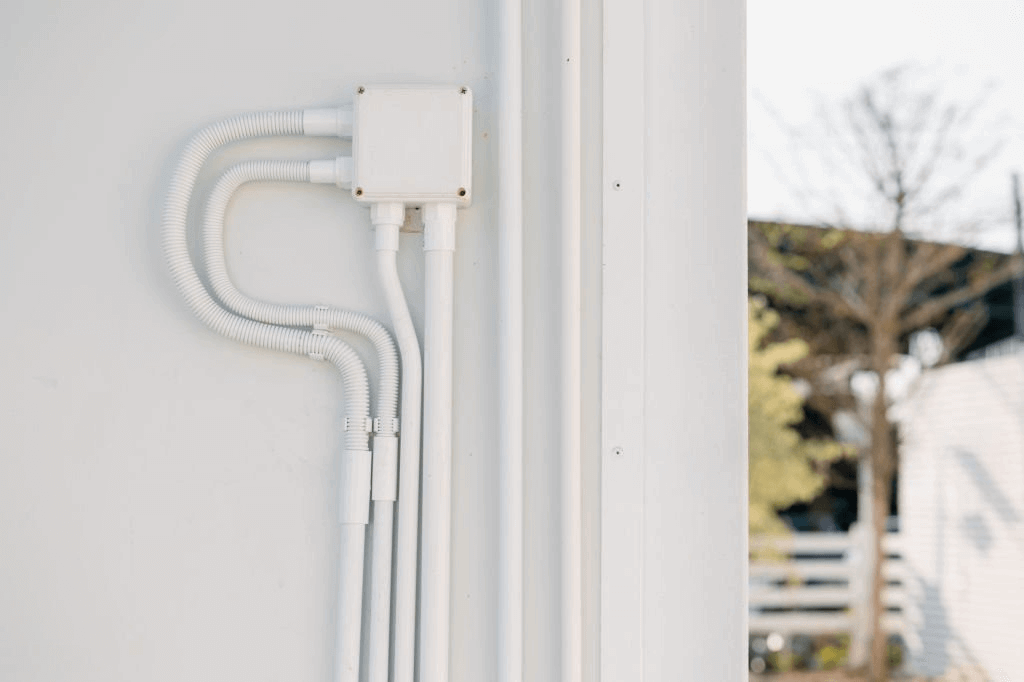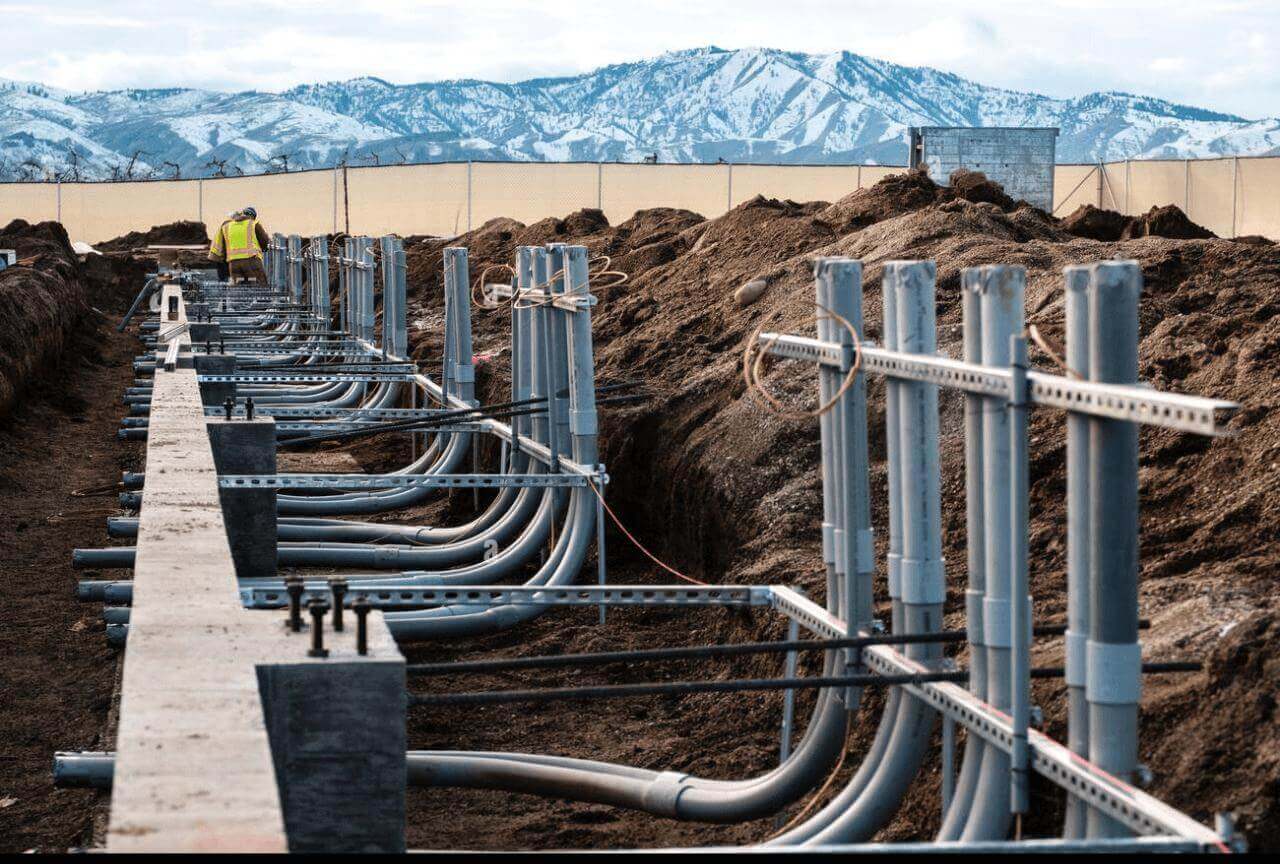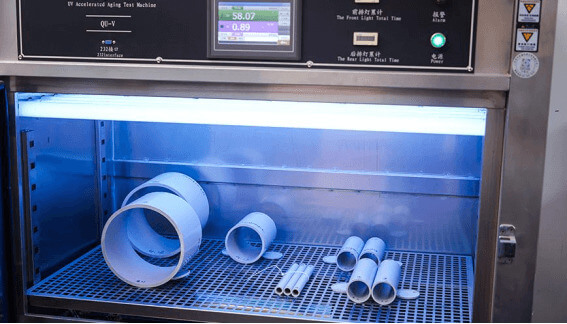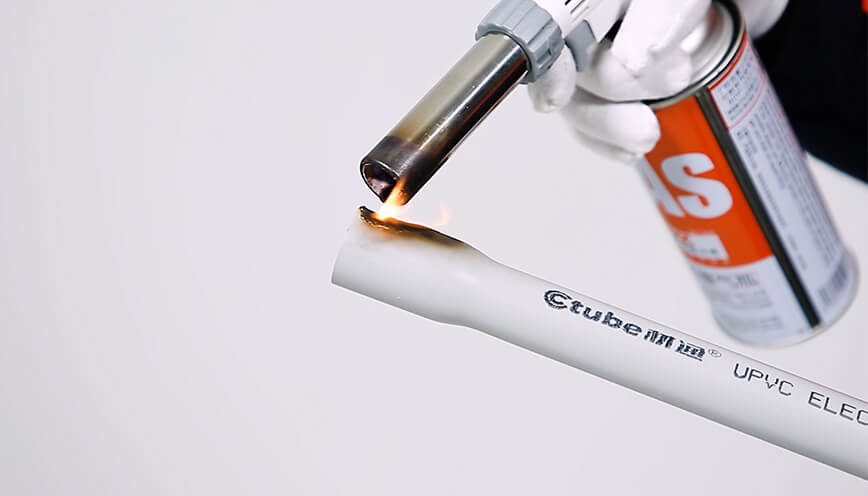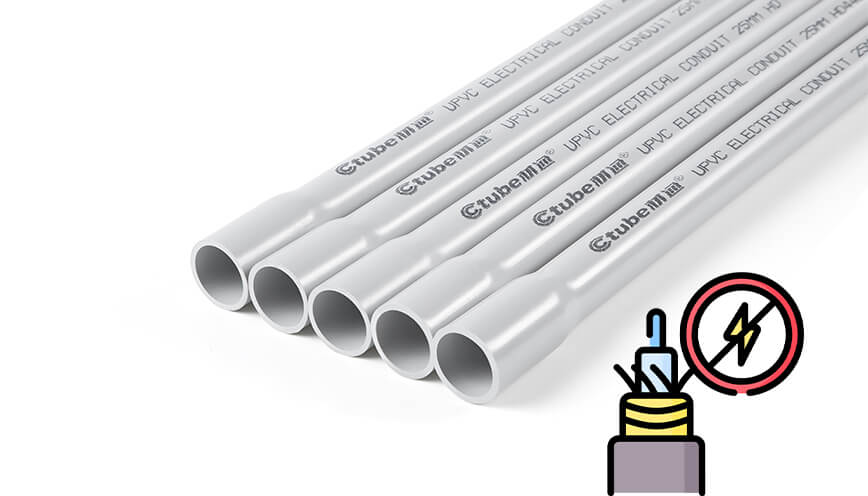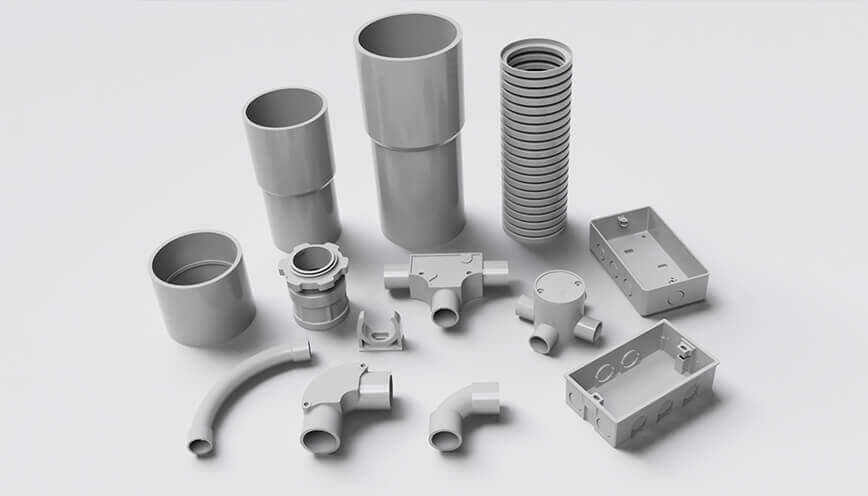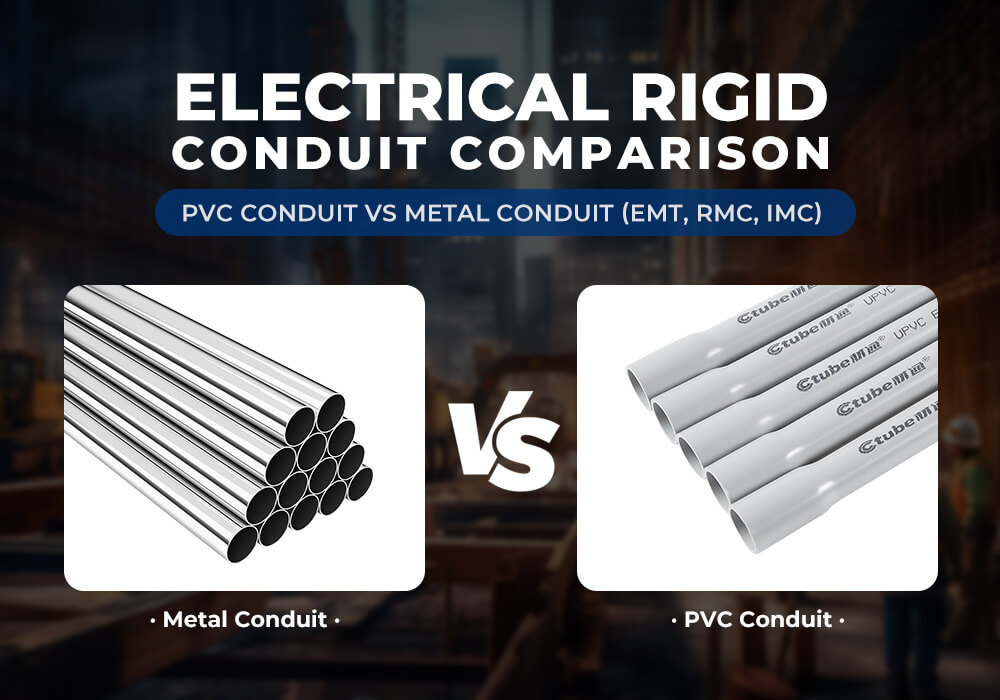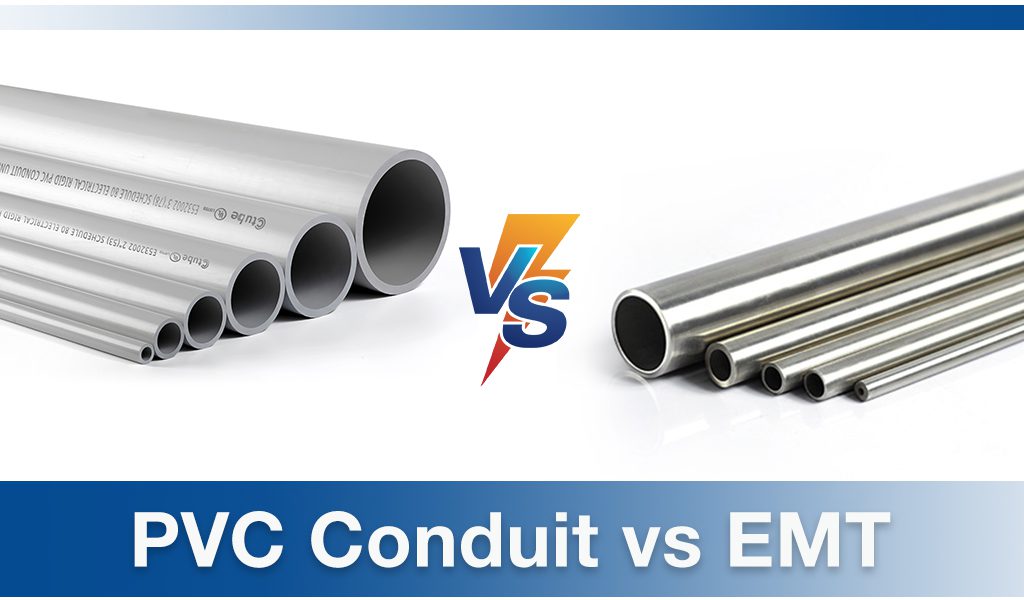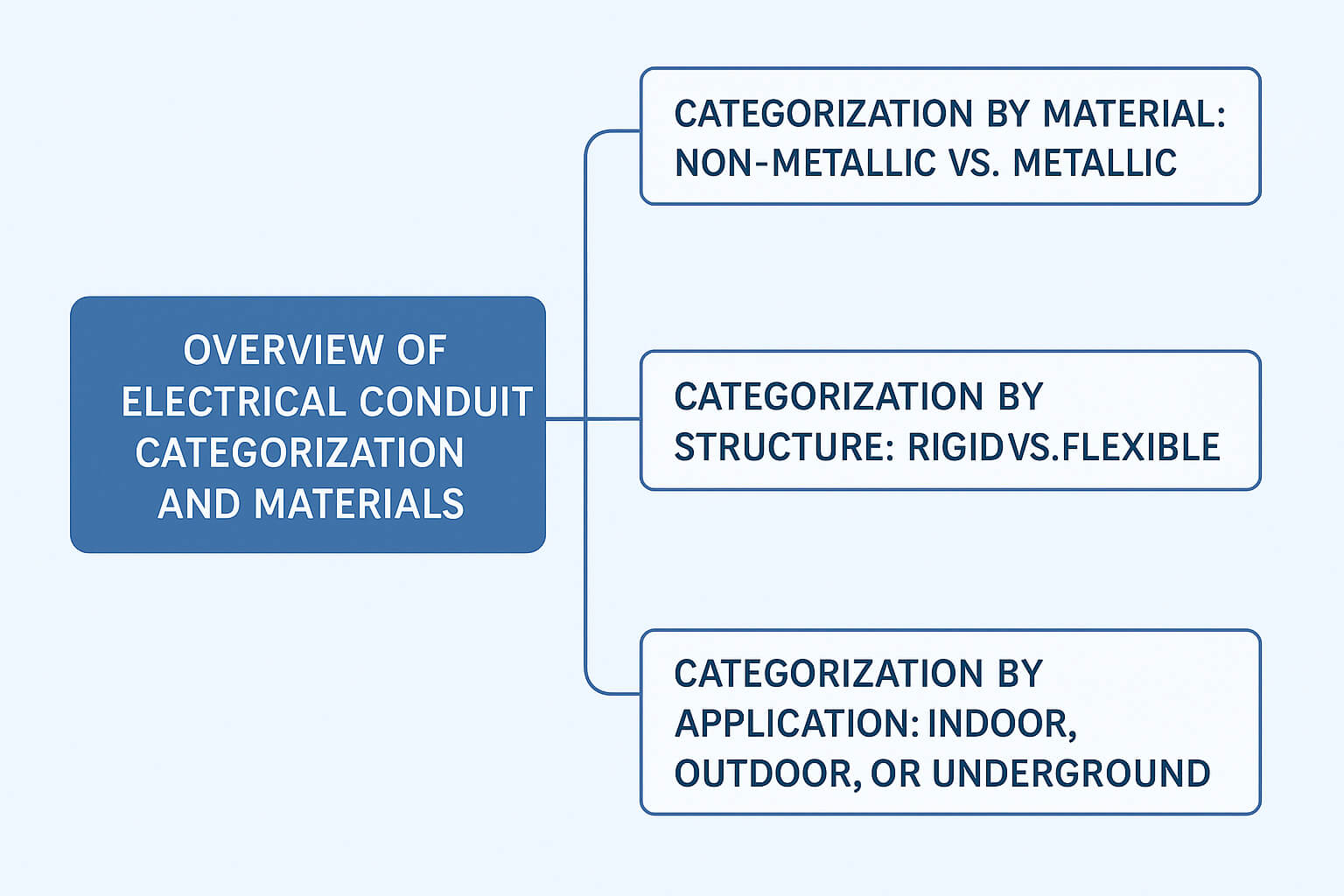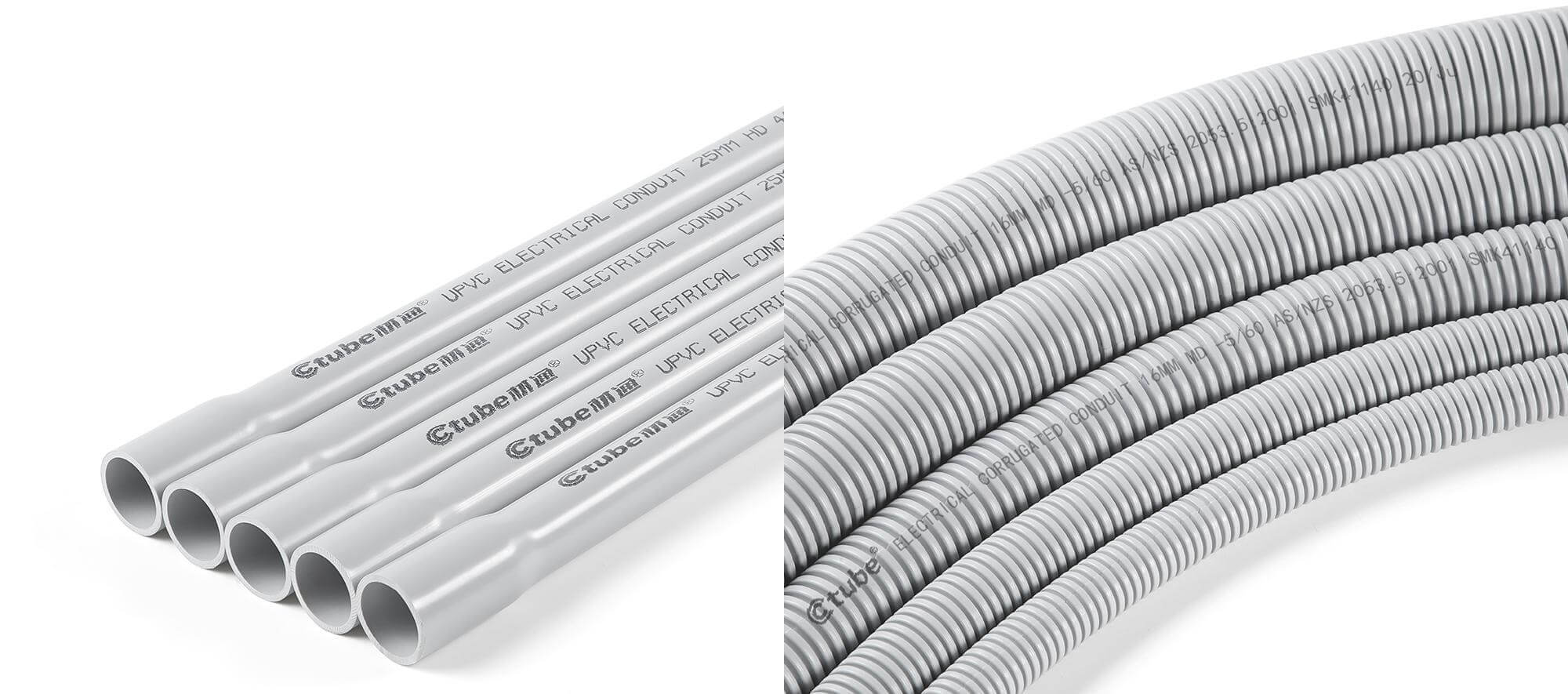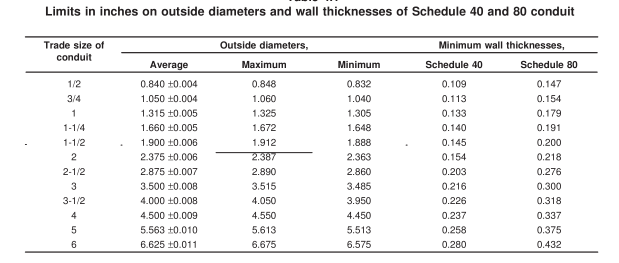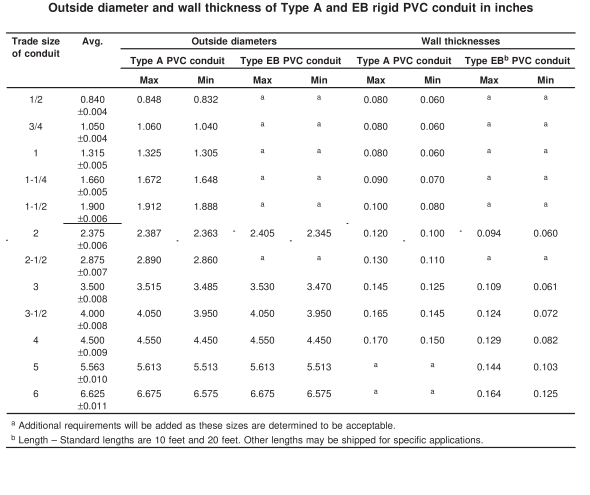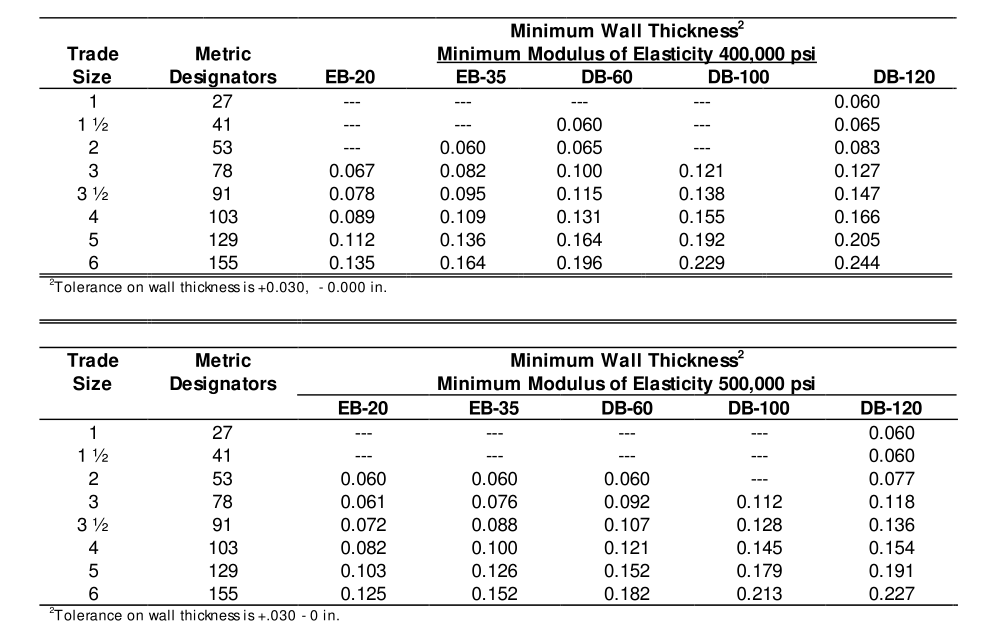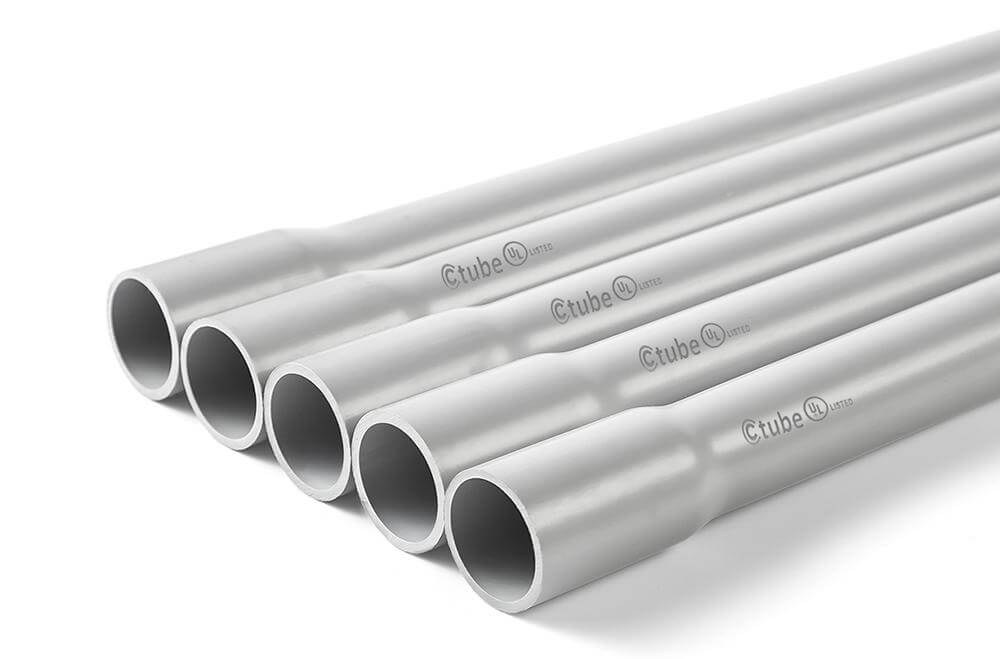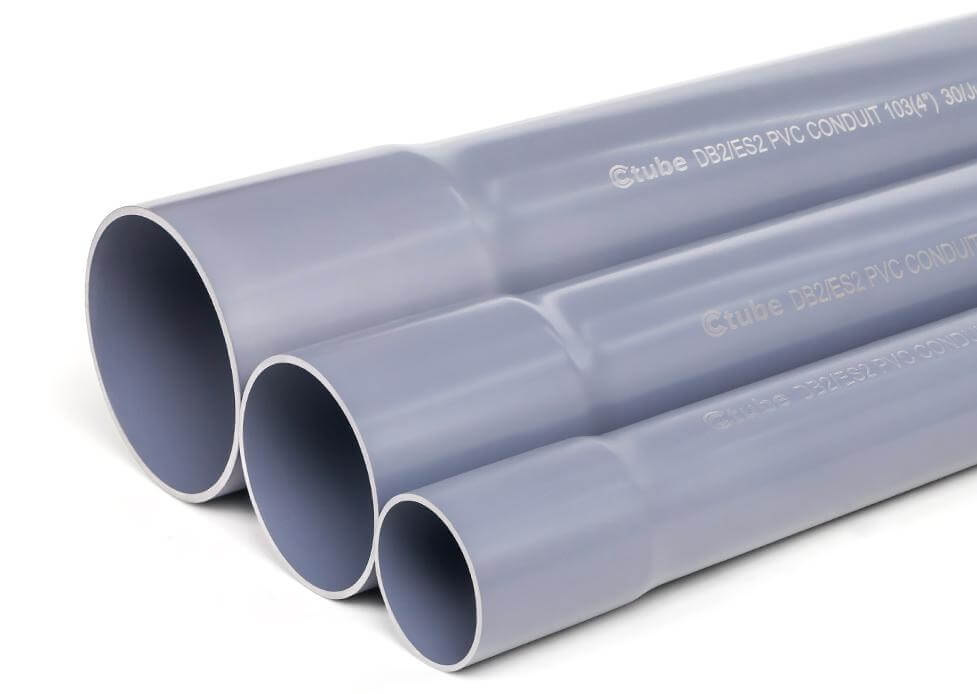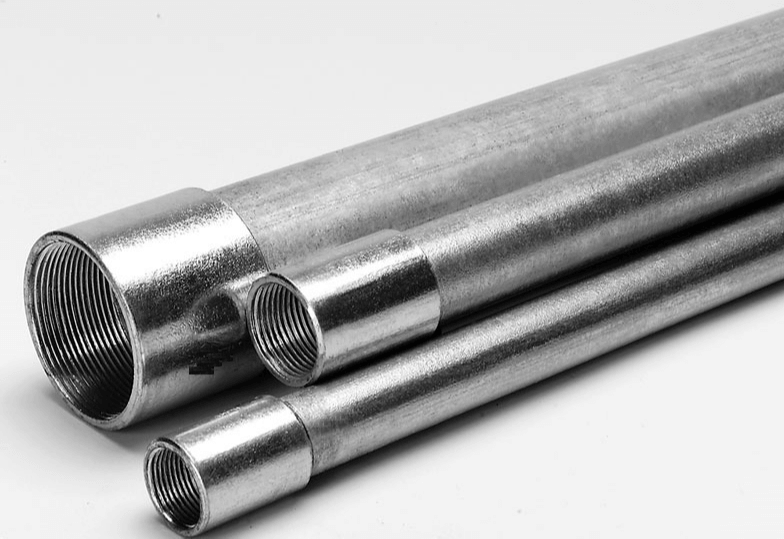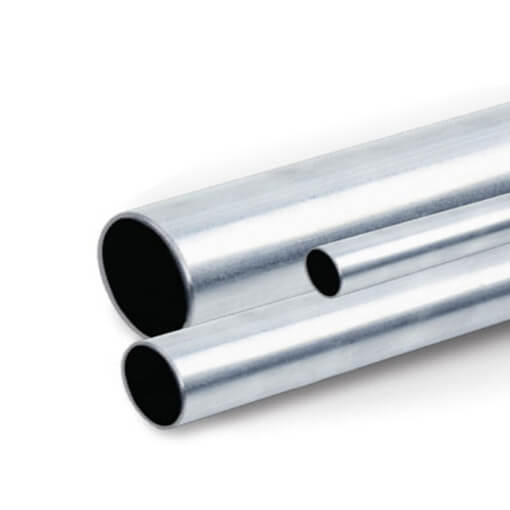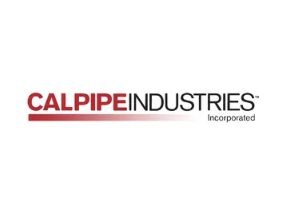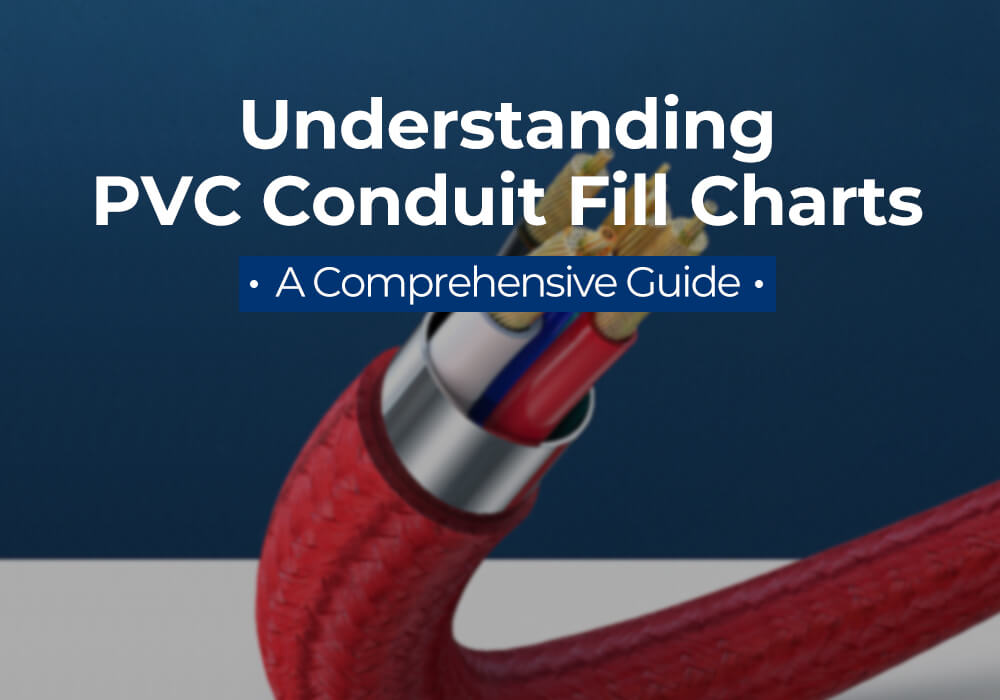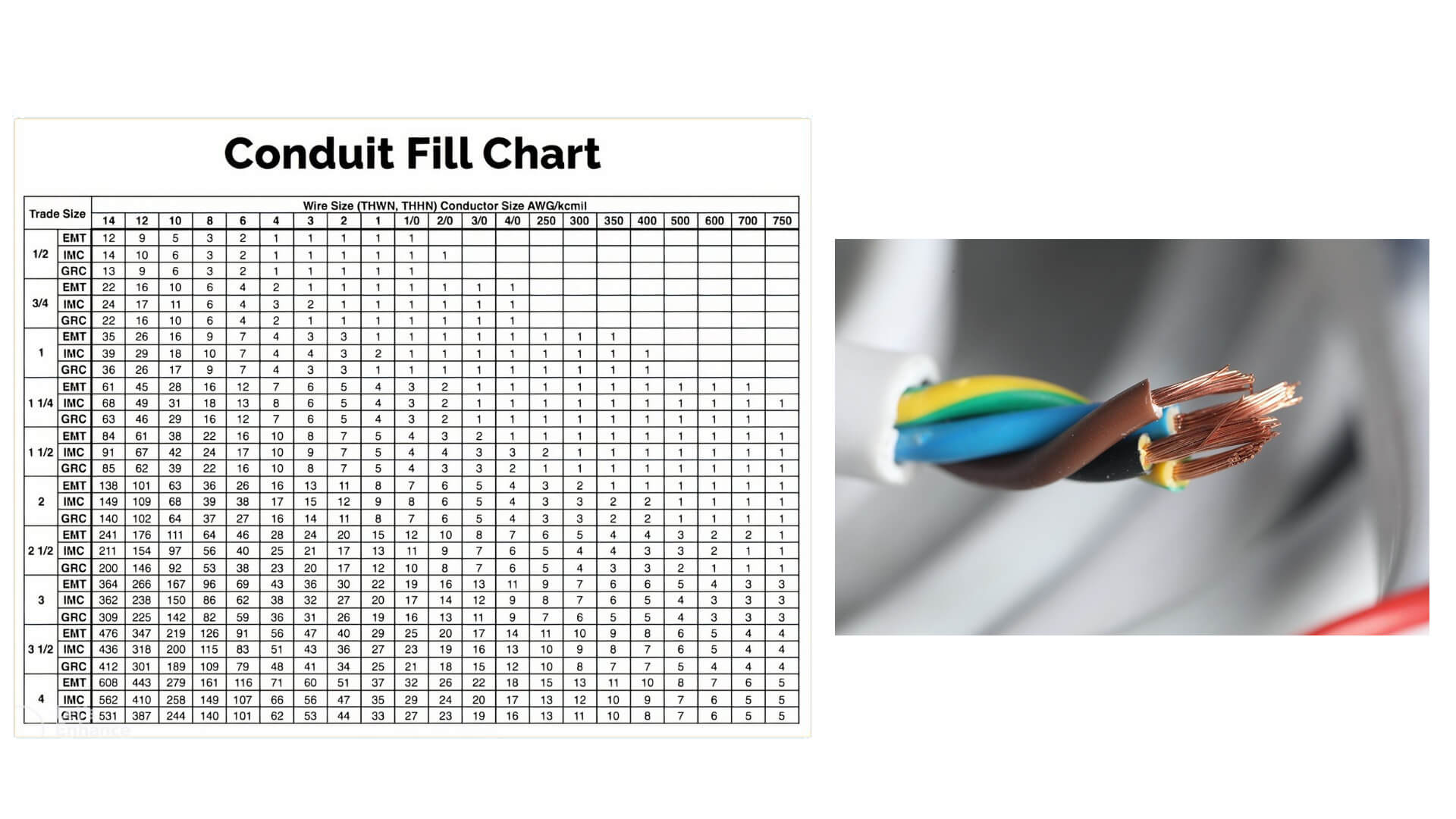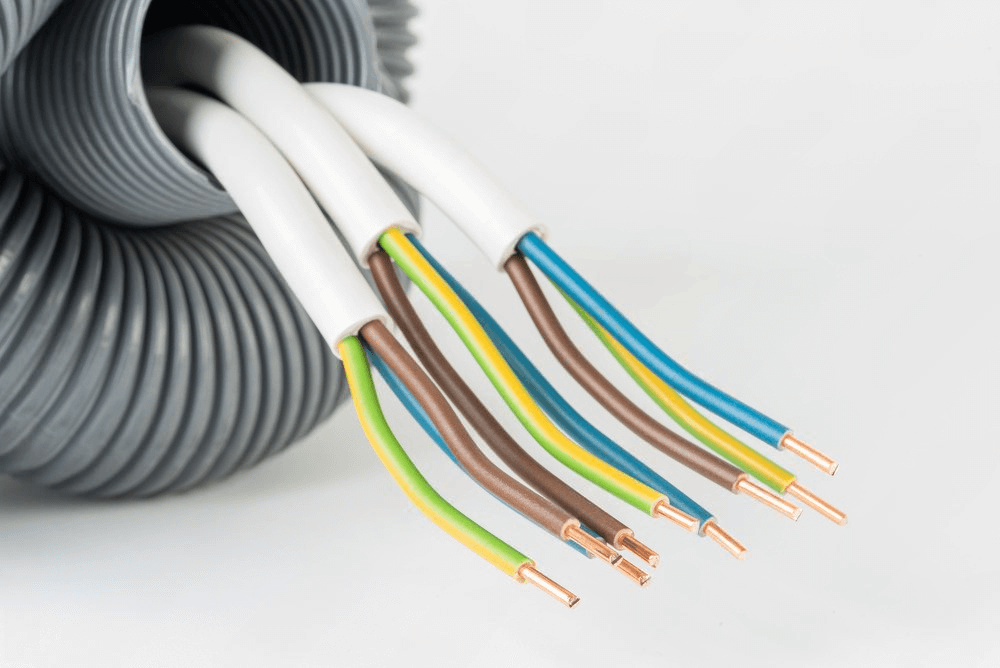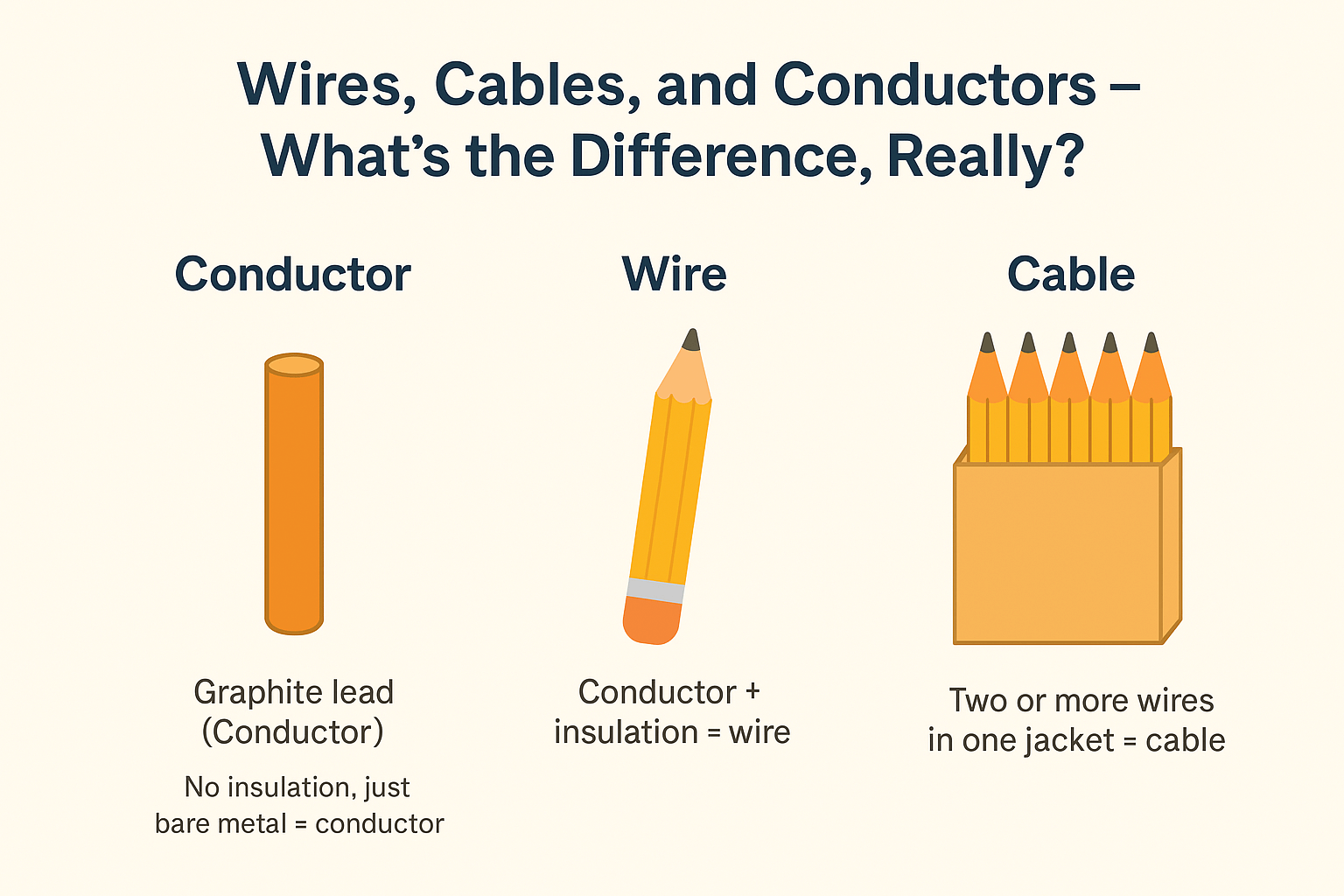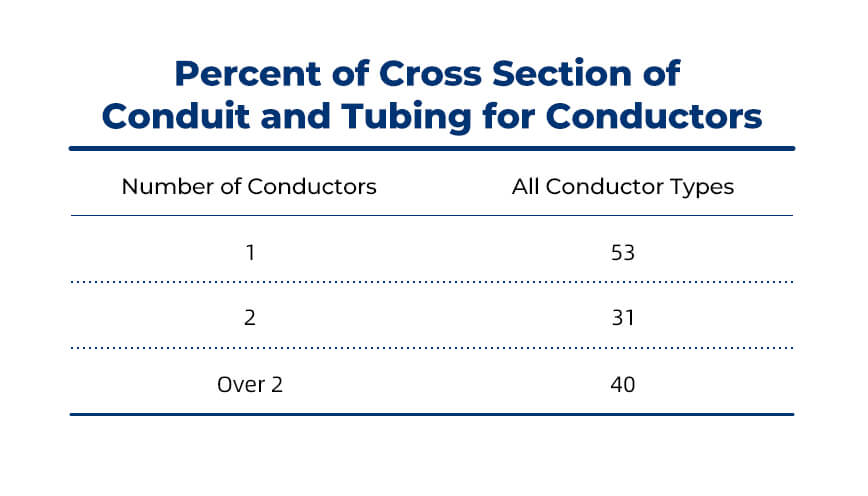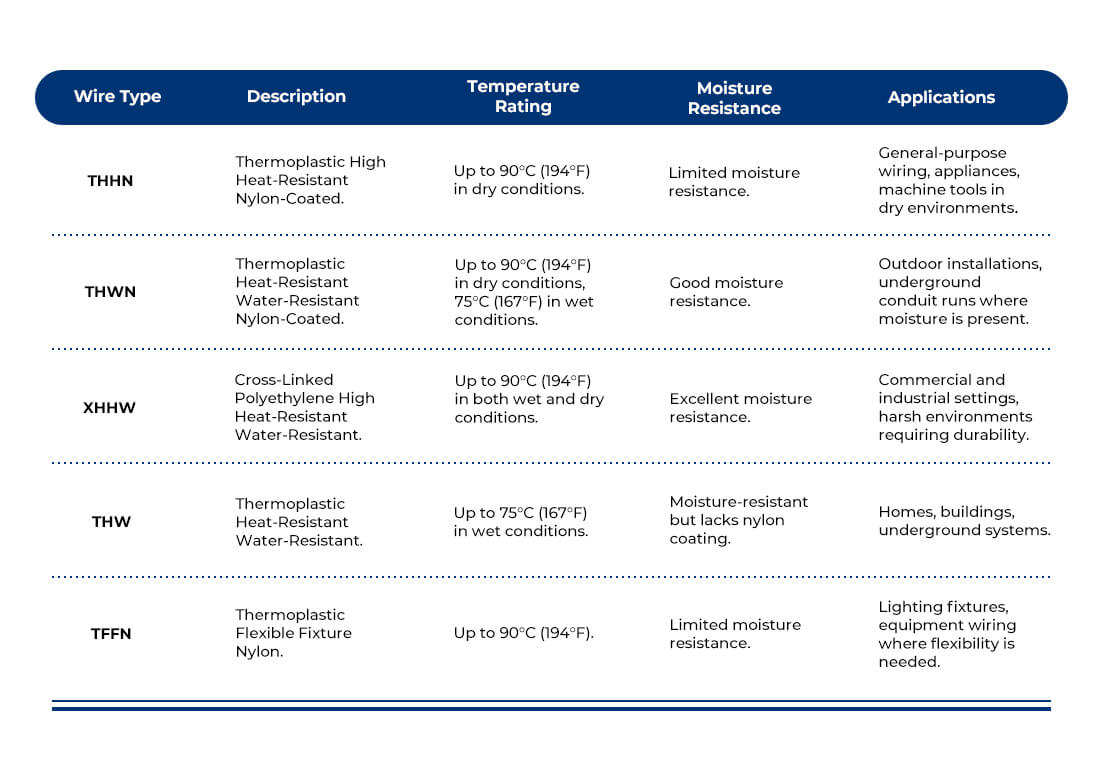The Benefits of Using PVC Conduit Pipes for Outdoor Applications
1. Introduce: Why Choosing the Right Outdoor Conduit Matters
When installing electrical systems outdoors, protecting your wiring from the elements is critical for ensuring long-term performance and safety.
Outdoor environments expose cables and electrical systems to moisture, sunlight, physical impact, and temperature extremes. This is why choosing the right outdoor conduit pipe and associated outdoor conduit fittings is essential.
Many people wonder, can PVC conduit be used outdoors?
The answer is yes.
Among the many types of solutions that outdoor conduits cover, PVC conduit pipes have become a popular choice thanks to their durability, cost-effectiveness, and ease of installation.
Whether you are planning to install an outdoor conduit for Ethernet cable, run electrical wire outdoor conduit for residential or commercial projects, or set up a weatherproof outdoor conduit system for more demanding environments, PVC offers a flexible and reliable option.
Today’s electrical standards require proper protection when running outdoor conduit above ground or underground. Using the correct electrical wire for outdoor conduit combined with a high-quality outdoor conduit pipe ensures that systems stay compliant with safety codes and resistant to environmental damage.
In this guide, we will explore the unique advantages of PVC conduits for outdoor applications, best practices for installation, key comparisons with alternative materials, and practical tips to maximize performance across different outdoor environments.
And we hope this help contractors, engineers, and property owners make informed decisions that enhance system reliability and extend service life.
2. What Makes PVC Conduit Rated for Outdoor Use?
In this section, we’ll take a closer look at what makes using PVC conduit outdoors popular.
2.1 Material Properties of PVC Conduit for Outdoor Wiring
The heart of outdoor pvc electrical conduit pipe is PVC resin—a synthetic polymer created by polymerizing vinyl chloride monomers. The basic properties of this resin—such as strength, chemical resistance, and weatherability—form the foundation of PVC conduit performance.
However, what truly defines the suitability of a weatherproof outdoor conduit for harsh outdoor environments lies not just in the resin itself, but also in the specific additives and formulations used by different manufacturers.
UV Stabilizers: Essential for preventing degradation when the conduit is exposed to prolonged sunlight. Without UV stabilizers, PVC can become brittle and discolor over time.
Impact Modifiers: Added to enhance toughness, especially in colder climates where plastic materials are more prone to cracking. These additives ensure that outdoor conduit fittings can withstand accidental impacts without failure.
Plasticizers (when applicable): Although rigid PVC used for electrical outdoor conduits generally minimizes plasticizer use to maintain strength, in some formulations, a small amount of plasticizers can help improve flexibility for specialized conduit designs.
Flame Retardants: These help the conduit achieve fire-resistance ratings, a critical safety feature for electrical wire outdoor conduit systems. They slow down the spread of flames along the conduit surface.
Thermal Stabilizers: These additives improve the heat resistance of the conduit, ensuring it retains structural integrity even under high-temperature outdoor conditions.
Colorants and Opacifiers: These not only define the external color (typically gray for outdoor-rated PVC conduit) but also help block harmful UV rays from penetrating deeper into the material.
It’s important to note that the exact blend of PVC resin and additives varies depending on the technical capabilities and proprietary formulations of different suppliers.
2.2 How PVC Compares with Metal Conduits in Outdoor Environments
When planning outdoor wiring projects, one common question arises: pvc or metal conduit outdoors — which is the better choice?
Firstly, PVC conduit pipes do not rust or corrode over time, making them a strong choice for wet or coastal environments. This is the one of the features that distinguishes them from metal conduits.
On the other hand, outdoor metal conduit types, such as rigid metal conduit (RMC) or electrical metallic tubing (EMT), offer outstanding physical protection but can be vulnerable to corrosion without proper coatings.
Secondly, PVC conduit is lighter, easier to cut, and faster to install.
Running outdoor conduit with PVC usually involves fewer specialized tools compared to installing metal conduit for outdoor wiring, which often demands threading machines and advanced cutting equipment.
When comparing emt vs pvc conduit outdoor, EMT is also lightweight and relatively easy to bend but still susceptible to rusting unless treated.
Additionally, besides the commonly mentioned options like EMT and RMC, which are types of rigid metal conduit, many people also wonder: can flexible metal conduit be used outdoors?
While flexible metal conduit (FMC) is widely used indoors for easy routing around obstacles, it is generally not recommended for exposed outdoor use unless specifically rated as “liquidtight flexible metal conduit (LFMC)” with UV-resistant jackets.
For most outdoor applications, using rigid conduit or weatherproof outdoor conduit options like PVC is a safer, longer-lasting choice.
In terms of cost, PVC conduit systems — both rigid conduit and flexible conduit— tend to be significantly more affordable than metal systems at multiple levels.
PVC conduit use in outdoors systems offer lower overall project costs due to their cheaper material price, reduced installation labor, and easier transportation and handling.
On the maintenance side, PVC outdoor electrical conduits are easier to maintain because they don’t require painting, anti-corrosion coatings, or frequent inspections to remain effective outdoors.
In contrast, metal conduit for outdoor wiring, while highly durable, often demands periodic maintenance to prevent rust, corrosion, and mechanical degradation, especially in harsh or coastal environments.
3. Key Advantages of Using PVC Outdoor Conduit
When discussing outdoor electrical installations, it’s important to clarify what “outdoor” actually means.
3.1 Aboveground and Underground Electrical conduit
Outdoor environments include both aboveground installations — such as exposed conduit runs on walls, rooftops, or fences — and underground applications, where conduits are buried below the surface for protection.
Standards and testing requirements for PVC conduits used aboveground and underground can vary according to the different challenges of environments.
For example, aboveground conduits must prioritize UV resistance and weatherproofing, while underground conduits must emphasize crush resistance, moisture sealing, and long-term durability under soil pressure.
With this context in mind, let’s explore why PVC conduit stands out as an excellent material choice for outdoor installations, whether they are exposed to the elements or buried underground.
3.2 Corrosion and Moisture Resistance of Outdoor Conduit of PVC
One of the key reasons PVC conduit excels in outdoor environments is its exceptional resistance to corrosion and moisture. Unlike metal conduits, which can rust or degrade when exposed to rain, soil chemicals, or high humidity, PVC is inherently immune to such threats due to its non-metallic, chemically inert nature.
In simple terms, taking rigid PVC conduit as an example, it must not absorb more than 0.50% of its own weight after 24 hours of water immersion, according to UL 651 testing requirements. Additionally, assembled joints must remain completely watertight after being filled with water for at least four hours. These standards ensure that high-quality PVC conduits offer reliable moisture protection in both aboveground and underground applications.
Detailed Water Absorption Testing Procedure, if you are interested in.
- First, a clean and dry sample of finished rigid PVC conduit — at least 6 inches (150 mm) long — is dried in a circulating-air oven at 50°C (122°F) for 24 hours.
- Next, the sample is conditioned in still air at 23°C (73.4°F) for another 24 hours.
- After conditioning, the sample is weighed precisely (W₁) and then fully immersed in distilled water maintained at 23°C (73.4°F) for 24 hours.
- Once removed, the sample is quickly dried with a soft cloth and reweighed (W₂).
- To meet UL 651 standards, the water absorption rate — calculated as (W₂ – W₁)/W₁ — must not exceed 0.50%.
For joint watertightness testing, two sections of rigid PVC conduit (each 12 inches or 300 mm long) are connected using either an integral or non-integral coupling, following the manufacturer’s installation instructions.
The assembly is filled with tap water and left standing vertically for at least four hours.
There must be no visible leaks at the joints, confirming excellent moisture resistance for outdoor conditions.
3.3 UV Resistance and Sunlight Stability of PVC Outdoor Conduit
Thanks to their advanced material formulation and rigorous quality standards, high-quality PVC conduits demonstrate outstanding UV resistance and sunlight stability, making them an ideal choice for outdoor and aboveground applications.
Even after long-term exposure to direct sunlight, they retain their structural integrity, color, and impact strength without significant degradation.
Test like sunlight resistance and elastomeric materials accelerated aging are used to helps predict whether those outdoor conduit and fittings will stay flexible and functional over time.
Samely, we take UL 651 PVC rigid conduit sunlight test as the example.
To test sunlight resistance, rigid PVC conduit samples are placed in a special machine that shines intense artificial sunlight (using a xenon-arc lamp) while also spraying water at regular intervals to mimic real outdoor weather, including sun and rain.
The test runs for a long time — up to 1440 hours (about two months) — with samples checked at different stages. After exposure, the conduits are carefully cut and tested for strength using a standardized impact test.
Even after hundreds of hours under strong light and water, high-quality conduits must still meet strict strength standards to pass. This ensures that the conduits installed outdoors will not become brittle or fail, providing safe and reliable performance year after year.
3.4 PVC Electrical Conduit Lightweight Yet Strong
PVC conduit is a remarkably lightweight material, especially when compared to metal conduits, making it easier to handle and install. Despite its light weight, it does not compromise on strength and durability, offering long-term performance in various environments.
So, why is PVC conduit so strong yet lightweight? The answer lies in a series of rigorous tests that ensure it can withstand harsh conditions.
According to UL 651, key tests for strength and durability of conduit include impact resistance test, deflection under load test, compression test and resistance to crushing and so on.
Impact Resistance Test
Impact Resistance Test focuses on how the conduit handles sudden shocks or quick, accidental impacts, like a heavy object falling on it.
PVC conduit undergoes an impact test where a heavy steel cylinder is dropped onto the conduit from a specified height.
According to industry standards, the 7/10 conduit samples should not exhibit any cracks or tears longer than 1/32 inch (0.8 mm) after being struck, demonstrating its resilience under forceful impact.
Compression Test
Compression Test evaluates how well the conduit withstands constant pressure over time, ensuring that it doesn’t get crushed or deformed when other materials push against it.
This is different from the impact test, which measures how the conduit reacts to sudden force, while this test focuses on how it holds up under continuous pressure.
In this test, the conduits squeezed between two plates, simulating situations like heavy soil or construction loads pressing on it for a long time.
Crushing Resistance Test
In the Resistance to Crushing Test, the key point is not just resisting pressure, but specifically preventing buckling. because buckling could block wires or cables inside the conduit, making it unusable.
Simply put:
➔ Compression Test checks how much “force” it can take.
➔ Crushing Test checks whether it “holds its shape” without collapsing under a specific heavy load.
Deflection under Load Test
And deflection under load test checks how much the conduit can bend under weight without failing, which is crucial for installations.
In this test, PVC conduit is subjected to continuous pressure to see how it deforms over time. The conduit should not deform significantly when exposed to stress or high temperatures.
3.5 Flame Resistance and Fire Safety of PVC Outdoor Conduit
PVC conduit provides enhanced fire safety in demanding electrical environments. One of the most critical tests used to verify this property is the UL 94 vertical flame test, which evaluates the material’s ability to resist ignition and flame propagation.
Vertical Flame Test Procedure
According to section 6.11 of the UL standard, finished Schedule 40 and Schedule 80 rigid PVC conduit specimens undergo a controlled vertical flame exposure. The procedure is as follows:
Three flame applications: Each specimen is exposed to a 60-second flame, followed by a 30-second rest, for a total of three cycles.
Test setup: The conduit is placed in a vertical position within a metal enclosure lined with surgical cotton beneath and around the burner. The test flame is applied at a precise angle and location.
Burner specification: A Tirrill gas burner is used, producing a flame with a temperature of at least 816°C (1500°F) at the tip of the blue inner cone.
Evaluation Criteria
The PVC conduit passes the test and is considered flame-retardant (UL 94 V-0 rated) if:
- It does not flame for more than 5 seconds after the removal of the test flame.
- It does not ignite the surrounding cotton via flaming droplets or particles.
- It is not completely consumed by flame during or after exposure.
If any of these failure conditions occur, the material is deemed capable of conveying flame to surrounding combustibles and does not meet fire safety requirements.
3.7 Non-Conductive Advantage of PVC Outdoor Conduit Installation
One of the most valuable features of PVC electrical conduit is its non-conductive nature. Unlike metal conduits, which can conduct electricity and may pose safety risks if not properly grounded, PVC is an insulator by design.
Prevents Electric Shock: If there’s a short circuit or damaged wiring inside the conduit, the PVC material does not allow electricity to travel through the conduit body. This greatly reduces the risk of electrical shock to workers and users.
Eliminates Grounding Requirements: Since PVC does not conduct electricity, it does not need to be grounded like metal conduits. This simplifies installation and reduces labor and material costs.
Safe in Harsh Environments: PVC conduit is ideal for wet or corrosive locations such as underground, coastal, or chemical-rich areas. Being non-metallic, it is immune to corrosion and stray currents, which are common issues in metal conduit systems.
Compatibility with Sensitive Electronics: PVC’s insulating properties help protect low-voltage and sensitive electronic systems from interference caused by unintended electrical contact.
4. Conclusion: PVC Conduit — A Reliable Outdoor conduit pipe
We’ve covered a lot about the benefits of using PVC conduit for outdoor electrical systems — from its durability and non-conductivity to fire resistance and weather protection. But you only really see the value once you start using it on the job.
At Ctube, we provide high-quality PVC conduit products that meet international standards and are designed to perform in tough outdoor conditions. Whether you’re planning an above-ground or underground installation, our range of solutions has you covered.
If you’re still deciding which type of conduit is right for your project, you can also check out our other guides:
- Everything You Need to Know About Outdoor Electrical Conduits: A Complete Guide
- What Are Underground Conduits? Everything You Need to Know
Finally, thank you for taking the time to read our guide. We hope the information has been helpful and gives you more confidence when choosing the right conduit for your outdoor electrical project. Wishing you success in all your installations!
FAQs
Q1: How to Install Electrical PVC Conduit Outdoors?
To install PVC conduit outdoors, first plan your path and use conduit marked sunlight-resistant. Cut and connect the pieces using PVC glue, then secure them with straps or clamps. Once everything is in place and dry, pull the wires through. Always follow local codes or the NEC for safe installation.
Q2: Is PVC Conduit Rated for Outdoor Use?
Yes, electrical PVC conduit can be used outdoors as long as it’s marked “sunlight-resistant.” It’s made to handle moisture, UV rays, and changes in temperature. Just make sure to check the labeling and follow the NEC (National Electrical Code) or your local regulations, depending on where you’re installing it.
Q3: Can I Use PVC Pipe for Outdoor Wire Conduit?
Standard plumbing PVC pipe should not be used for electrical wiring outdoors. Only electrical-grade PVC conduit, tested for fire resistance, UV protection, and mechanical durability, should be installed. Using plumbing PVC for electrical purposes can lead to serious safety violations and is prohibited by code.
The Benefits of Using PVC Conduit Pipes for Outdoor Applications Read More »


